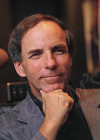HOME | ABOUT US | MEDIA KIT | CONTACT US | INQUIRE
HOME | ABOUT US | MEDIA KIT | CONTACT US | INQUIRE

Today, most everyone could name a legendary president or actor or baseball player or artist or even a race horse. Most could name a famous lawyer or architect or nurse, but a legendary physician? Does Marcus Welby count? Or Doogie Howser? Given that Louis Pasteur is French and Joseph Lister English, let me cite an American doctor who deserves to be in the same pantheon, arguably America’s 20th century MVP.
With COVID-19 so much in the news, his name should be bruited about more than it has been. For all the stress of COVID on parents, they cannot know the depth of anxiety that plagued their grandparents when they were young parents. We Baby Boomers, however, knew what our parents worried about. It was hard not to. The signs of it were everywhere.
Many neighborhoods had a kid like my neighbor Billy. About the only game Billy and I could play together on our otherwise rough-and-tumble block was chess. From the time he was two until the time he died, Billy’s legs were locked in steel, a victim of the crippling pestilence known as polio, a word that still chills those of us who saw its consequences.
My cousin Butch got polio in the brain. He died before I knew him. I did, however, get to know his younger brother Eddie, who was roughly my age. We called him “Crazy Eddie.” If you had met him, you would know why. His grief-stricken parents spoiled him into craziness.
Eddie’s son, we called “Crazy Eddie Jr.” after he made the front page of our local paper for a near-fatal armed robbery at a suburban drive-in theater. The lingering effects of the disease could and sometimes did resonate through generations.
In the early 1950s, polio met its match. The first man to master it was an unlikely conqueror. His name was Jonas Salk. Born in 1914, he grew up in Harlem with his immigrant mother and a first-generation American father, neither of whom had much in the way of education.
Salk’s timing was both good and bad. It was good in that cities like New York still had public high schools for intel-lectually gifted students. In Salk’s time, these schools catered disproportionately to poor but ambitious Jewish kids.
Salk’s timing remained good for a while. After high school, he enrolled in the tuition-free City College of New York, then an extremely competitive school. Today CCNY, now CUNY, remains tuition free, but even at that price, the education is no bargain. In 1969, following huge community protests, the school abandoned meritocracy and threw the doors open to whomever. CCNY was ahead of its time. Other institutions have been keen to catch up, including, alas, medical schools.
Remarkably, New York City’s elite high schools have defied the pressure to water down their standards. Today, these schools cater disproportionately not to Jews, but to poor but ambitious kids of Asian descent, many of them first generation.
In his search for a medical school, Salk’s timing was not so good. He started applying for medical schools just as these schools, especially in the Ivy League, were seeing more Jewish applicants than they liked.
Collectively, these schools accepted roughly 75 percent of Salk’s non-Jewish CCNY classmates, but only 20 percent of the Jewish ones. Jews faced a discrimination not unlike the kind Asian-Americans face today. Too many of them were/are too smart. They were/are said to “disrupt the culture.” No quotas, though; of course not.
Salk was not to be deterred. The Medical School at NYU proved more welcoming than the Ivy League, and it was there that he first started researching viruses. Following the war, as discrimination against Jews eased, Salk headed up a research lab at the University of Pittsburgh, and it was there that he first tackled polio.
Leave a Reply